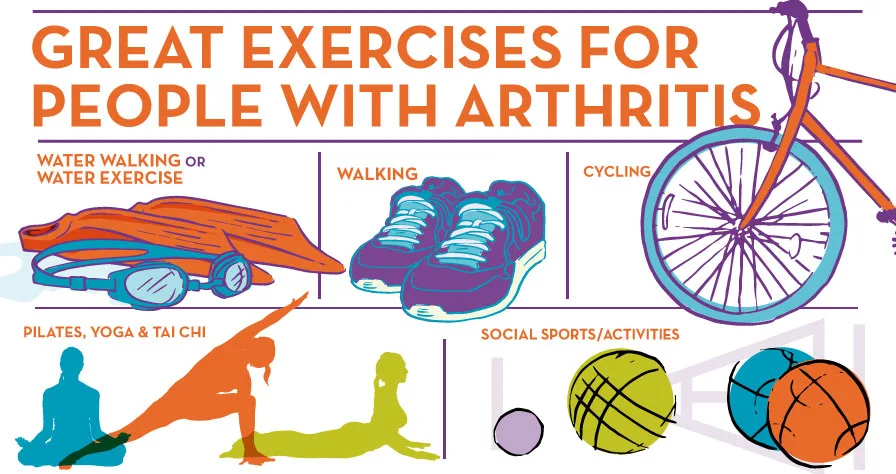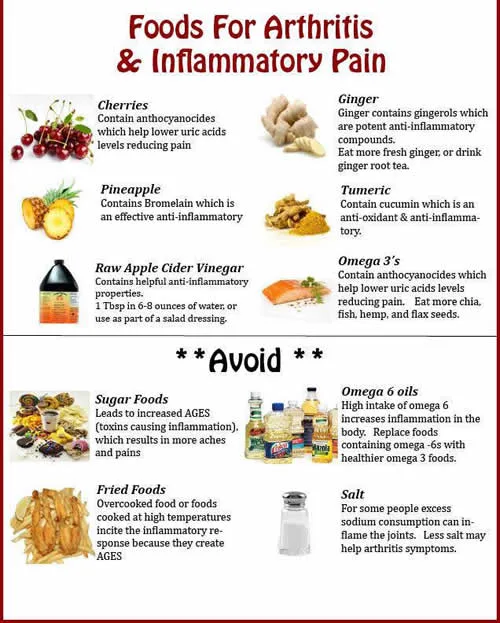Joint pain: Is your diet a factor? Can supplements help?
Joint pain is a common symptom of a many of diseases. Osteoarthritis is joint inflammation that results from cartilage degeneration and could be caused by trauma, such as a sports injury, or from repetitive stress. Anyone from a barber to a pianist to a dancer can be at risk for osteoarthritis. Osteoarthritis is also known as degenerative or mechanical arthritis.
is also known as degenerative or mechanical arthritis.
Although more common in people over 60, osteoarthritis can affect younger people, especially those who have had a joint injury or surgery.
Osteoarthritis manifests as joint pain, stiffness, swollen joints, and loss of range of motion.
Rheumatoid arthritis is an autoimmune disease that causes chronic inflammation of the joints and other areas of the body. Today I’m talking about osteoarthritis, and ways to prevent and possible non-surgical ways to lessen the symptoms.
Primary or Secondary?
Primary osteoarthritis is not caused from a injury or disease, but is related to natural aging of the joint, with a loss of cartilage. This causes friction between the bones, leading to pain and swelling, and reduction of mobility.
 Secondary osteoarthritis is caused by another disease or condition, as I mentioned above. However, overweight and obesity is a risk factor for osteoarthritis. As noted by the Arthritis Foundation, in the USA, one in 5 have been diagnosed with arthritis, but obesity pushes that number to one in 3 — and 2 out of 3 Americans are overweight or obese.
Secondary osteoarthritis is caused by another disease or condition, as I mentioned above. However, overweight and obesity is a risk factor for osteoarthritis. As noted by the Arthritis Foundation, in the USA, one in 5 have been diagnosed with arthritis, but obesity pushes that number to one in 3 — and 2 out of 3 Americans are overweight or obese.
Carrying around a lot of extra weight puts stress especially on hip and knee joints, damaging cartilage that can lead to osteoarthritis. Every pound of excess weight adds four pounds of pressure on the knees.
And excessive fat is more than merely a cosmetic issue. Adipose tissue, home to millions of fat cells (adipocytes), is linked to chronic inflammation, which in turn promotes development of insulin resistance and other metabolic complications, some, like type 2 diabetes and heart disease, are deadly.
Pain Relief Options
Osteoarthritis results when cartilage, a protein substance that cushions joints, gradually dissipates.
Glucosamine and chondroitin supplements are popular health supplements, generally taken in hopes of slowing the progression of osteoarthritis.
As reported in Harvard Health, according to one estimate, one in five Americans take glucosamine, thought to promote formation and repair of cartilage, and one in 10 take chondroitin, thought to increase the elasticity of cartilage and inhibit enzymes that break down cartilage.
Glucosamine and chondroitin both occur naturally in the body. Glucosamine is also called chitosamine, and is a natural substance found in the shells of shrimp or crabs (ConsumerLab.com notes a corn source is also available). Supplemental chondroitin is typically derived from pig or cow cartilage, but also from shark and chickens too. There’s a “chondroitin-like” supplement made from algae that’s also available.
Article continues below graphic.
 The evidence isn’t persuasive that either work, although there have been many studies. A recent multi-center, randomized, double-blind, placebo-controlled study of 164 patients with moderate to severe knee pain due to osteoarthritis was conclusive in demonstrating that the supplements are no more effective than placebo for join pain. In fact, the study was stopped early when those taking the supplement felt more joint pain than those taking a placebo. Read the study here.
The evidence isn’t persuasive that either work, although there have been many studies. A recent multi-center, randomized, double-blind, placebo-controlled study of 164 patients with moderate to severe knee pain due to osteoarthritis was conclusive in demonstrating that the supplements are no more effective than placebo for join pain. In fact, the study was stopped early when those taking the supplement felt more joint pain than those taking a placebo. Read the study here.
The researchers note that both glucosamine and chondroitin are considered “slow-acting” supplements. The University of Maryland’s Complementary and Alternative Medicine Guide notes that the largest study to date, on 1,600 people with osteoarthritis of the knee did not reduce pain in the overall group, but did show some improvement among those with moderate-to-severe knee osteoarthritis. They note that glucosamine needs to be taken from two to four months before seeing effectiveness.
Dr. Robert Shmerling, writing for Harvard Health, notes that if his patients take glucosamine and/or chondroitin for osteoarthritis, he keeps an open mind, checks on any possible interactions with current medications, and cautions them that dietary supplements are not regulated or inspected for safety or efficacy. However, he doesn’t object, because, he says, there are different types and doses. He says that in general, the two supplements, either taken alone or in combination, do not have significant risks, although he does note that the combination can promote diarrhea and abdominal pain.
If you’re taking blood thinners such as warfarin do not take glucosamine. If you are taking NSAIDs or any prescription medications, or if you are taking other supplements like Gingko biloba do NOT take glucosamine or glucosamine/chondroitin supplements without first speaking with your physician. They may react negatively with your meds, promoting bleeding or interfering with blood glucose control. Read more about possible interactions here.
Other Options: Pain relievers, exercise, acupuncture
Over-the-counter (OTC) or prescription-strength medications, heat, ice, and physical therapy can be helpful. WebMD covers treatments comprehensively. Read more here.
As noted in HealthAfterFifty.com, the type of medication your doctor recommends depends on the intensity of your pain and the potential side effects of the medication. The drug with the fewest potential side effects is usually tried first.
You and your doctor may discuss additional medications and protocols, including injections of steroids to reduce inflammation and/or anesthetic to relieve pain. Hyaluronic acid, similar to synovial fluid that cushions the joints, may help with pain. Read more about hyaluronic acid injections here.
Topical ointments such as those containing capsaicin, found in chili peppers, may relieve joint pain. Capsaicin blocks substance P, which helps transmit pain signals, and also promotes the release of endorphins, chemicals that block pain.
Exercise for arthritis
 As reported by HealthAfterFifty.com, regular exercise can help reduce pain and stiffness, even if your joint damage is severe. A small study of 43 older adults with severe knee osteoarthritis who participated in a supervised exercise program, including cycling, stretching, muscle strengthening, or water-based exercise for 90-120 minutes daily showed significant improvement compared to another group who had “conventional clinical care” including nonsteroidal anti-inflammatory drugs (NSAIDs) and hyaluronic acid injections. After one year, only the participants in the supervised exercise group showed a significant improvement in scores for pain-related disabilities and knee pain and stiffness in daily life.
As reported by HealthAfterFifty.com, regular exercise can help reduce pain and stiffness, even if your joint damage is severe. A small study of 43 older adults with severe knee osteoarthritis who participated in a supervised exercise program, including cycling, stretching, muscle strengthening, or water-based exercise for 90-120 minutes daily showed significant improvement compared to another group who had “conventional clinical care” including nonsteroidal anti-inflammatory drugs (NSAIDs) and hyaluronic acid injections. After one year, only the participants in the supervised exercise group showed a significant improvement in scores for pain-related disabilities and knee pain and stiffness in daily life.
But if your knees and joints are painful, it’s hard to lose weight through exercise, so keep it low and slow. Check in your with doctor first, and see a professional physical therapist to learn the right exercises to improve your joints. These could include water workouts (really great for people who are heavier or suffering from severe joint pain), yoga, tai chi, range-of-motion, strengthening, and aerobic exercises. Don’t forget about resistance training — grab that exercise band and strengthen your upper body too. Start slowly, and read more about arthritis and exercise from the Mayo Clinic here.
As noted by the Arthritis Foundation, acupuncture is an ancient practice, and may help with joint pain and stiffness. Read more here.
Joint replacement might be an option depending on whether or not your pain is unremitting despite all of your best efforts. Read more here.
Diet Prescription
Finally, can what you eat and drink prevent and/or treat osteoarthritis? Inflammation is associated with autoimmune diseases such as rheumatoid arthritis, psoriasis, heart disease, diabetes, and Alzheimer’s disease. For osteoarthritis, the answer is not so clear.
Article continues below graphic.
 Certain foods have the capacity to suppress inflammation, and good nutrition can enhance immunity and provide antioxidants to reduce inflammatory stress. By eating to achieve a healthy weight, you’re both reducing the pressure on your joints and increasing your immunity naturally.
Certain foods have the capacity to suppress inflammation, and good nutrition can enhance immunity and provide antioxidants to reduce inflammatory stress. By eating to achieve a healthy weight, you’re both reducing the pressure on your joints and increasing your immunity naturally.
As noted by the Arthritis Foundation, the Mediterranean-type eating plan is an ideal one for staying healthy, reducing inflammation, and controlling weight, all while enjoying the flavors of natural, whole foods. Enjoy all types of fish, vegetables, fruits, nuts, seeds, whole grains and healthy fats.
Some foods are especially anti-inflammatory, including ginger, turmeric, pineapple, and omega-3 fatty acids. Eliminating the SAD foods (typical in the Standard American diet) such as deep-fried, fatty, sugary, and fake foods full of fake oils is the first step toward better health.
I’ve written about this lifestyle and adopting a “non-diet” approach to healthy living for CuencaHighLife.com, and you can read here.
The Mediterranean inspired lifestyle emphasizes:
- A plant-based lifestyle, enjoying a variety of colorful vegetables and fruits, whole grains, legumes, starchy tubers like potatoes and yucca, and seeds and nuts
- Replacing butter with healthy fats, such as olive oils, minimizing saturated fats
- Adopting healthy cooking techniques such as broiling, baking, grilling, and poaching. Ditch the deep-fried foods, especially in restaurants.
- Using herbs and spices instead of salt to flavor foods
- Limiting red meat to no more than a few times a month
- Eating fish and poultry at least twice a week
- Drinking red wine in moderation — always with food, and preferably with friends (optional)
This eating pattern also recognizes the importance of being physically active, and enjoying meals with family and friends. Enjoy your food, create strategies for living well, and don’t “diet” but instead, enjoy the foods that keep you healthy.
In upcoming weeks I’ll write about gout, which manifests in severe joint pain. According to Arthritis.org, “Of all the forms of arthritis, gout has the most obvious dietary link.”
Sources
Arthritis.org. Hyaluronic Acid Injections for Osteoarthritis. http://www.arthritis.org/living-with-arthritis/treatments/medication/drug-types/other/hyaluronic-acid-injections.php
Arthritis.org. Unhealthy Mix: Obesity and Osteoarthritis. http://www.arthritis.org/about-arthritis/types/osteoarthritis/articles/obesity-osteoarthritis.php
Arthritis.org. Acupuncture and Osteoarthritis. http://www.arthritis.org/living-with-arthritis/treatments/natural/other-therapies/mind-body-pain-relief/oa-acupuncture.php
HealthAfterFifty.com. Exercise vs. Surgery for Knee Pain: What Works. https://www.healthafter50.com/arthritis-and-joints/article/exercise-vs-surgery-for-knee-pain-what-works
HealthAfterFifty.com. What You Need to Know About Arthritis Medication. https://www.healthafter50.com/drugs-and-supplements/article/what-you-need-to-know-about-arthritis-medication
HealthAfterFifty.com. What to Know About Joint Replacement. https://www.healthafter50.com/arthritis-and-joints/article/what-to-know-about-joint-replacement?utm_source=email&utm_medium=email&utm_content=EAH_161023_001&utm_campaign=EMH&spMailingID=9737400&spUserID=MTQxMTQxMDM5NDM2S0&spJobID=1021706451&spReportId=MTAyMTcwNjQ1MQS2
Hopkinsarthritis.org. Johns Hopkins Arthritis Center. Nutrition & Rheumatoid Arthritis. https://www.hopkinsarthritis.org/patient-corner/disease-management/rheumatoid-arthrtis-nutrition/
Journal of the American College of Rheumatology. Combined Treatment With Chondroitin Sulfate and Glucosamine Sulfate Shows No Superiority Over Placebo for Reduction of Joint Pain and Functional Impairment in Patients With Knee Osteoarthritis: A Six-Month Multicenter, Randomized, Double-Blind, Placebo-Controlled Clinical Trial. http://onlinelibrary.wiley.com/doi/10.1002/art.39819/full
MayoClinic.org. Exercise helps ease arthritis pain and stiffness. http://www.mayoclinic.org/diseases-conditions/arthritis/in-depth/arthritis/art-20047971?pg=1
MayoClinic.org. Joint Pain. http://www.mayoclinic.org/symptoms/joint-pain/basics/definition/sym-20050668
MedicineNet.com. Osteoarthritis. http://www.medicinenet.com/osteoarthritis/article.htm
ScienceDirect.com Is osteoarthritis a metabolic disease? http://www.sciencedirect.com/science/article/pii/S1297319X13002169
University of Maryland Medical Center. Complementary and Alternative Medicine Guide. Glucosamine. http://www.umm.edu/health/medical/altmed/supplement/glucosamine
___________________






















